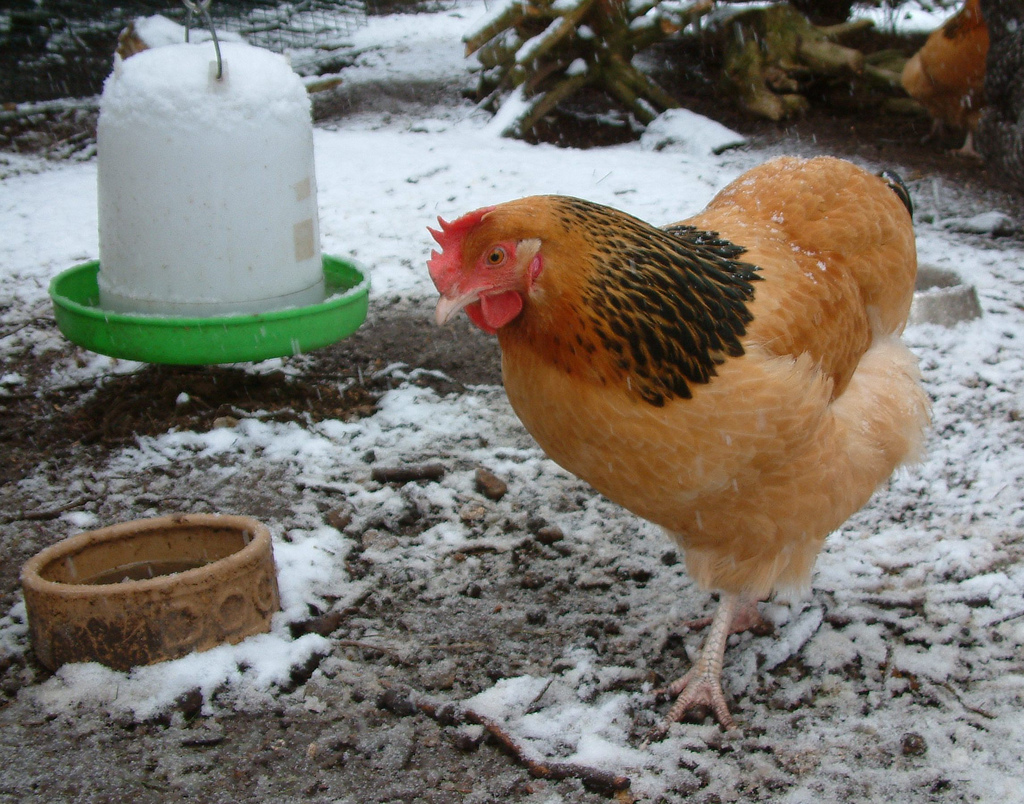Diagnosis
Okay, this is the easy part. Determining if the chicken has frostbite is pretty simple.
Color change in the legs, feet, wattle or comb are good indications of frostbite. Birds who experience swelling, blisters, black tissue, loss of appetite and loss of energy should be doctored.
Causes
Areas on the bird that get wet and then exposed to freezing temperatures are greatly impacted. Wind chill is another factor. Moisture in the air, combined with high winds and freezing temperatures, can quickly lead to frostbite. Chickens do have a covering of feathers to keep them warm, but their legs, feet, comb and wattles are left completely exposed. These areas are the most common places for a chicken to have frostbite. With proper monitoring and care once a case has been developed, the chicken still can live a long and happy egg-producing life.
Care
The first thing you will want to do is immediately relocate your chicken to a warm environment. Any place will do as long as it is warmer than the coop it should be ok. We suggest keeping a warmer on hand as well for just such an occasion. The chicken should also be kept in the warm climate until it has fully healed. If the affected area hasn't healed then putting it back in the coop with the other chickens will only lead to further problems as it gives the other birds something to peck at.
Slowly warm the affected area on the bird by soaking the feet in a lukewarm Epsom salt bath. Do not allow the water temperatures to top 100 degrees Fahrenheit. Providing water that is too warm will heat up the area too quickly and may cause further damage. It also will cause a great deal of discomfort to the bird. Never use a heating pad, hair dryer or another source of direct heat. If the comb or wattle is affected, soak a towel in the solution and gently press against the affected area. Do not rub the area; this not only will cause more discomfort to the bird but will also cause more damage. Leave any blisters or damaged tissue alone. They are there to protect the new flesh beneath it from further damage.
If an area has been opened
Clean the wound with peroxide and allow to dry. The area should be kept clean and dry at all times. Apply a layer of cream to the area. This will protect the area and provide assistance with healing properly. Steer clear from water-based oils; they will only freeze and make the injury worse. Coconut oil and petroleum jelly are great choices.
Vitamins should be given to the chicken to assist in fighting off infection.
Prevention
Wattles can become wet when the chicken drinks from a traditional chicken watering container. This moisture can freeze in place, causing frostbite. Wet coop and run floors are also a leading cause of frostbite on the feet. The coop should be cleaned regularly to prevent moisture in the coop. Ventilation is also key to maintaining lower moisture levels, although wind blocks should be installed on the run to keep the wind exposure down.
Photo & Article Source: Off The Grid News
